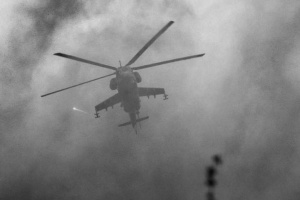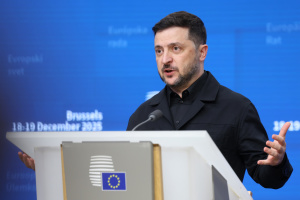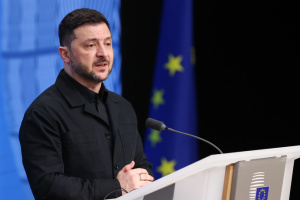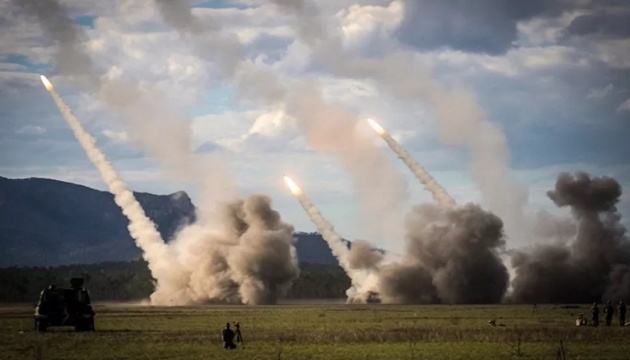
ATACMS hits hard and is extremely difficult to intercept
On October 17, the Special Operations Forces of the Armed Forces of Ukraine conducted a successful DRAGONFLY operation, striking airfields in Berdiansk and Luhansk, temporarily occupied by Russian invaders, with ATACMS missiles.
Berdiansk is located 85 kilometers from the nearest point of the frontline, while Luhansk is almost 100 kilometers away.
According to the latest data, ATACMS was destroyed:
- nine helicopters of various modifications;
- special equipment that was at the airfields;
- an air defense launcher;
- an ammunition depot;
- airfield runways were damaged.
Later, it became known that the United States allegedly handed over to Ukraine only "about 20" ATACMS missiles of the M39 version with a range of up to 160 kilometers. However, according to experts, this is only the beginning - more will follow.
Ukrinform found out what specific opportunities ATACMS opens up for the Ukrainian Defense Forces in the Great War. But first, let us remind you what it is.
MGM-140A ATACMS: what kind of missile did Ukraine receive?
According to "Militarnyi" magazine, the development of ATACMS began in 1982. The first test launch of the missile was carried out on April 26, 1988. The first production missile was put into full operation in January 1991 under the MGM-140A ATACMS index. These were the missiles that were transferred to the Armed Forces of Ukraine.
- Design
The ATACMS is a ballistic missile with a solid fuel engine. It is launched using M142 HIMARS and M270 MLRS launchers. ATACMS can operate in all weather conditions and at any time of the day.
The MGM-140A (the one that was handed over to us) belongs to the first generation of the missile family with a maximum range of 165 kilometers. It is equipped with an autonomous inertial guidance system with laser gyroscopes, but there is no GPS correction system yet.
The missile guidance system provides a maximum circular deviation from the target with a radius of 225-250 meters.
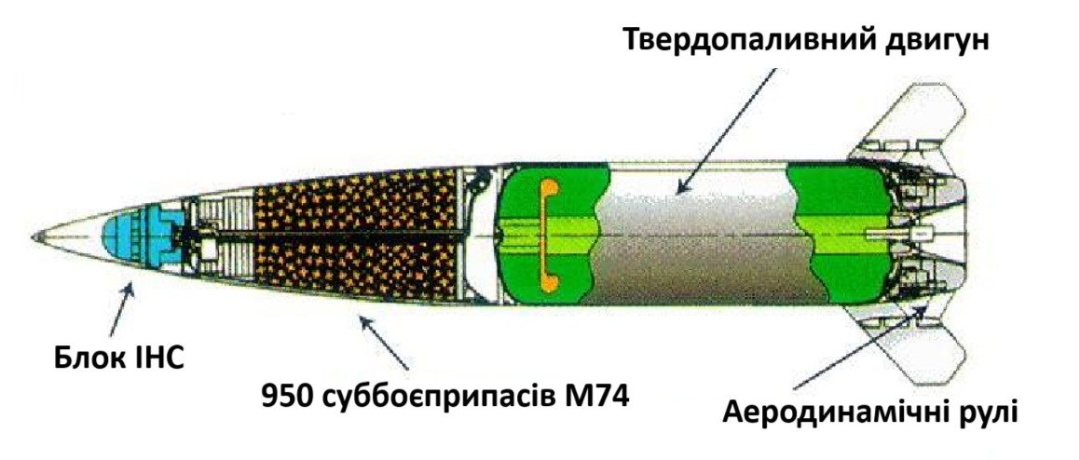
The missile is controlled in the air by aerodynamic rudders located in the tail section, based on signals from the onboard control system.
The missile's relatively low accuracy is compensated by its powerful 560-kilogram cluster warhead. It carries 950 fragmentation submunitions of the M74 type.
The M74 has a diameter of 75 mm and weighs about 500 grams. The munition is capable of producing about 260 fragments upon detonation, creating a kill zone of up to 15 square meters.
Its hemispheres are made of tungsten and alloyed with nickel and iron. They have grooves applied from the inside, along which fragments are formed.
The same submunitions were spotted on the territory of the airfield near Berdiansk, where Russian helicopters and personnel were hit on October 17.
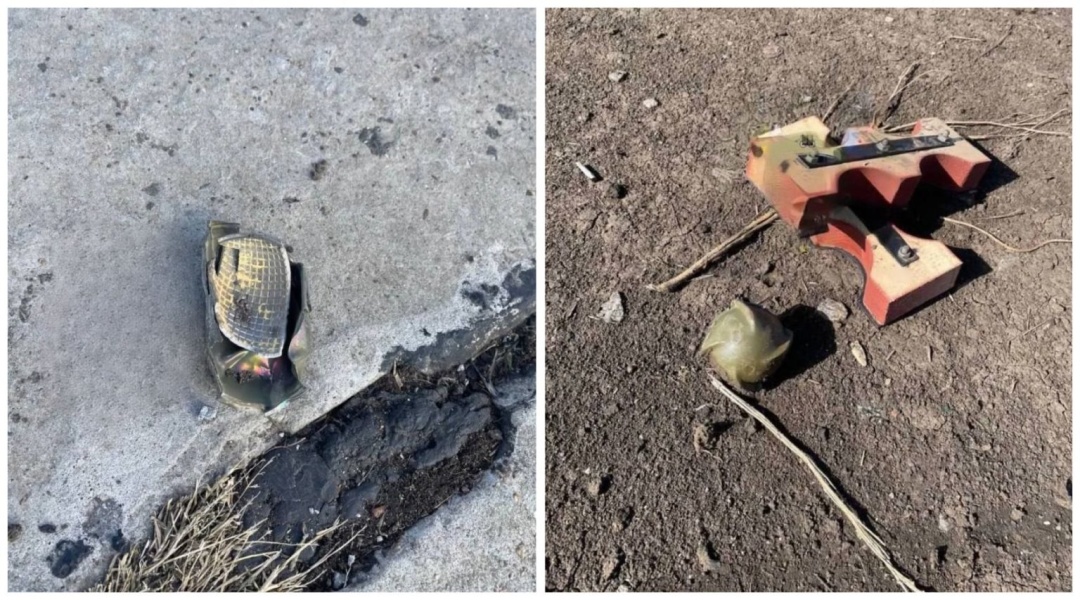
- How many were produced and what was their cost?
M39 (MGM-140A) missiles were mass-produced until 1997. During this time, 1650 missiles were produced, after which production was discontinued in favor of the next version. From 1997 to 2003, 610 M39A1 missiles were produced.
In 2010, the United States dramatically revised its policy of using cluster munitions. The US Army started ordering missiles with a monobloc high-explosive warhead.
Between 2001 and 2004, 176 units of M48 monoblock missiles were ordered. Subsequently, between 2004 and 2013, another 513 M57 high-explosive fragmentation missiles were produced.
In 2017, the United States began a revision of ATACMS missiles, during which old M39 and M39A1 missiles were rejected and modernized to the M57E1 version with an extended range and a new monoblock warhead.
The cost of unmodernized M39 and M39A1 cluster missiles is about $1 million.
The occupiers may withdraw some aviation away from the front line
In a commentary to Ukrinform, military observer of the Information Resistance group Oleksandr Kovalenko first of all mentioned the number of ATACMS that Ukraine received from the United States.
"First, 20 missiles are much better than zero. Second, let's remember what happened with M142 HIMARS. Did we immediately receive dozens or hundreds of them? No. We received a few units of M142 HIMARS and M270 HIMARS. We gradually increased the number, demonstrating their effective use. The same will happen with ATACMS. Most likely, this is a test batch.
Thirdly, according to the latest open data, the United States has up to 4,000 missiles in storage. I would note that this is 4 times more than the UK and France had Storm Shadow and Scalp EG combined," the military expert said.
ATACMS significantly expands our ability to strike deep behind enemy lines.
"We are talking about the destruction of Russian facilities located not only on the mainland of Ukraine - in Kherson, Zaporizhzhia, Donetsk and Luhansk regions, but also on the Crimean peninsula," emphasizes Mr. Kovalenko. "Ukraine has received M-39 cluster ATACMS. These missiles can cover a large area. There are other cluster ATACMS, more modern versions of the M-39A, with a range of up to 300 and 275 submunitions of M74, which I am sure we will soon receive, as well as versions with a high-explosive warhead. Nevertheless, the M-39 is quite enough to deliver a high-precision strike on an airfield, repair base or facility with a large number of personnel or equipment."
Military observer Denys Popovych: "If we take into account the range of the missiles that were handed over to us - 165 km - then everything up to Dzhankoy falls under their influence."
These are the airfields in Berdiansk, Melitopol, Chaplintsyi, Strilkove, and possibly even Dzhankoy itself, but it is practically on the verge of being hit by these missiles.
"In the end, it's not just about airfields - these are warehouses, headquarters, troop concentrations - anything our command deems necessary to hit," he emphasizes.
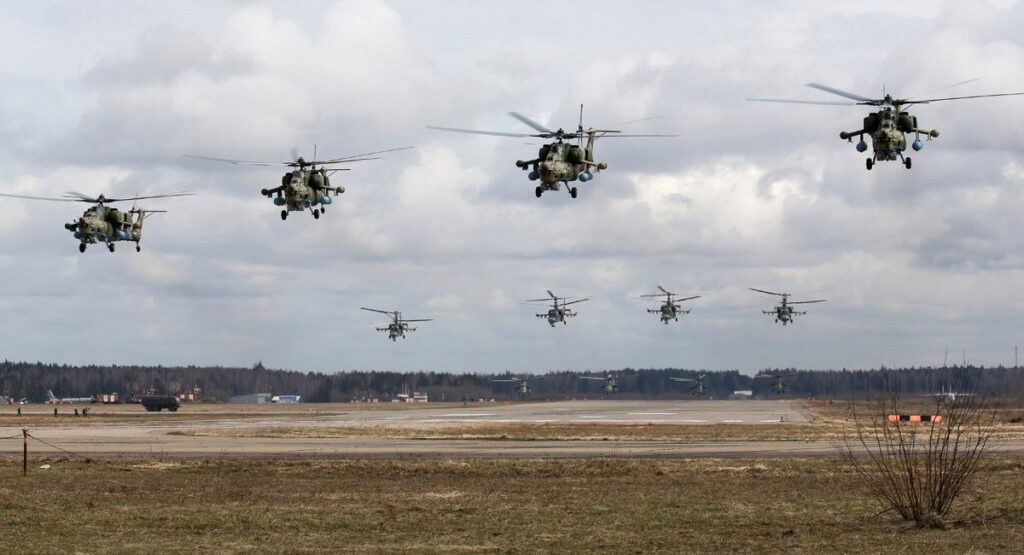
This will have an impact, first of all, on the actions of Russian army aviation, as they will have to be redeployed far to Crimea and even to the territory of the Russian Federation to avoid being hit.
"At the same time, the Russians should keep in mind the existence of M39A1 missiles with a range of 300 kilometers, which can also be at the disposal of the Armed Forces of Ukraine, and this puts the whole of Crimea at risk," emphasizes Mr. Popovych.
Moreover, redeployment to more remote airfields increases the time of helicopter approach, which affects the speed of combat missions, increases the amount of fuel, increases the consumption of motor resources, and complicates logistics.
"If we assume that the distance from Berdiansk to the front line is 90 km, it will take about 20-25 minutes for a normal flight (the cruising speed of a Ka-52 helicopter is 260 km/h). However, if the airfield is moved 200 kilometers, it will take about an hour. During this time, a lot can change at the front line," states Denys Popovych.
Colonel Roman Svitan, Armed Forces Reserve, also emphasizes that after the attacks on the Berdiansk and Luhansk airfields, the Russians will most likely be forced to move their aircraft to a distance from which they cannot be hit by ATACMS.
"This means that Russian army aviation will no longer be based in Luhansk and Donetsk regions, in the Ukrainian Azov Sea region, and possibly even in Crimea. After all, no matter how many helicopters Russia has, if they are in the ATACMS target area, they will be destroyed. In my opinion, enemy aircraft will now leave the occupied territories of Ukraine and relocate to Russian cities near the Azov Sea, such as Yeysk, as well as to the airfields of Rostov, Voronezh, and Belgorod," the military expert said.
"Russians use helicopters 3-4 times a week to disrupt the Ukrainian counteroffensive. Most of the helicopters are in the Melitopol direction - about 20. Now some of them have been destroyed. This, accordingly, significantly reduces their potential in this area. Now the Russians have a problem with where to put the helicopters, because Berdiansk may turn into a new Chornobaivka," ironically says Oleksandr Musienko, director of the Center for Legal Studies.
By combining ATACMS with other missiles, we will achieve maximum efficiency
Until recently, Ukraine had two types of western long-range missiles in service - Storm Shadow and Scalp EG, as well as a missile of its own production, probably a modernized Neptune. Now this list has been expanded to include ATACMS.
"Storm Shadow and Scalp EG are subsonic cruise missiles, and they do an excellent job, especially given the extreme difficulty of intercepting these cruise missiles by Russian air defense systems. But they have two unpleasant nuances. The first is related to the carrier, which is the Su-24 frontline bomber. First of all, we have a limited number of them. The Su-24s are tied to airfields that are not only subject to occasional attacks by the occupiers, but are also monitored," says Oleksandr Kovalenko.
"It is very difficult to conduct an unnoticeable, highly secretive attack when you have a carrier, and the carrier has a location, even if it is not the only one.
But the second nuance is even more unpleasant: limited ammunition.
"No matter how good Storm Shadow and Scalp EG are, their number is small, and the UK and France themselves have a limited supply of these missiles, and their production is not fast enough to produce the strike capability required for the Joint Strike Force for unlimited use per day," the military analyst added.
And now about ATACMS...
"As I mentioned earlier, there are more ATACMS in storage in the US than Storm Shadow and Scalp EG in the UK and France combined, and many times over. But the most important thing is that this missile allows us to significantly expand the range of launch locations and increase the surprise of strikes," says Mr. Kovalenko.
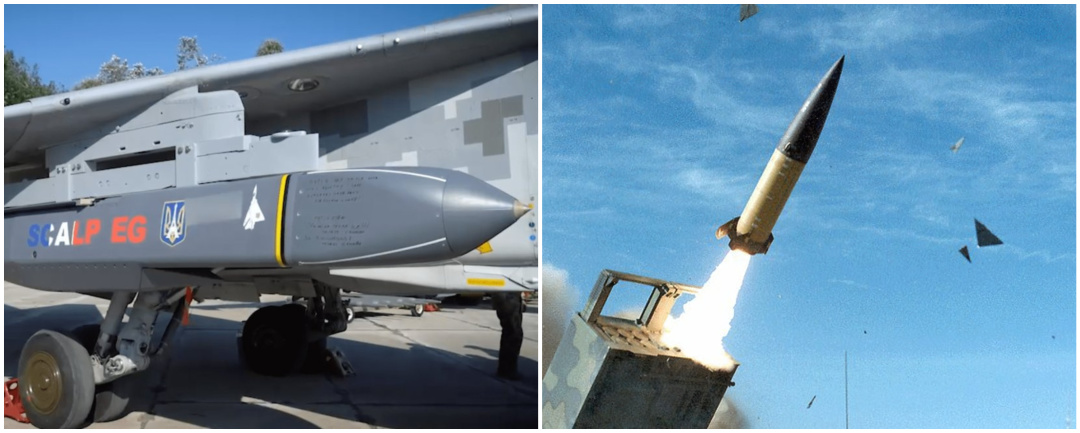
Due to the fact that ATACMS is used by M142 HIMARS and M270 MLRS, there will be no constant link to the location of deployment, and the enemy will not be able to track the direction of the threat: "There are dozens of M142s and M270s along the entire combat line that can use ATACMS at any time. Let me remind you of the archaic Intermediate-Range Nuclear Forces Treaty (INF Treaty). Its essence was precisely the non-proliferation of such missiles for land-based systems, since it is more difficult to track the movement of such a launcher to the launch position than to track an airplane."
Thus, Ukraine will be able to significantly diversify the geography of long-range missiles and significantly increase its ability to successfully advance the Joint Forces Operation and liberate the occupied territories.
"By combining ATACMS with other missiles, we will achieve maximum efficiency," emphasized Oleksandr Kovalenko.
It will be difficult for the occupiers to counteract
Experts doubt that the Russians will be able to respond with anything, and most importantly, to counteract ATACMS.
"What could be the answer? Unless they scare us with Iskanders. But this will not change anything for us. We have been seeing their Iskanders flying at our towns and villages for almost two years now. So they definitely won't be able to surprise us. Try to intercept ATACMS. But this is quite difficult to do with most of the means that the Russians have. Yes, according to the declared characteristics, that is, on paper, the S-400 Triumph and Buk-M3 are supposedly capable of doing this, but whether this is really the case is a big question. So far, they have not faced such missiles," emphasizes Oleksandr Kovalenko.
Military expert Ivan Matveev also argues that ATACMS missiles are difficult to destroy, especially given the fact that Russian air defense is in a serious crisis.
"The occupiers are unlikely to cope with the new fast and complex target," he predicts.
Denys Popovych reminds that ATACMS is a ballistic missile.
"It has a high speed, reaches the target in just 2-3 minutes, and therefore requires air defense systems with appropriate characteristics that would provide a quick response and have high-speed missiles. Russia has such systems. In particular, these are the S-300V and S-400 modifications. But they do not have many such systems, it is impossible to cover everything with them, and they are needed elsewhere. In addition, they themselves turn into a target. Therefore, the long-awaited arrival of ATACMS provides us with new opportunities and creates additional problems for the enemy."
Roman Svitan adds that the peculiarity of the ATACMS missile is that it is not just a ballistic missile, but a "pseudo-ballistic" missile. In other words, the American missile "glides" along a ballistic trajectory, changing direction from time to time.
"Air defenses are able to detect ATACMS and even launch a missile to intercept it, but because of this 'pseudo-balistic' trajectory, it may not hit the target. This is due to the fact that at the final stage, ATACMS changes its direction of movement [unlike a classical ballistic missile, which moves straight],» explains the Armed Forces Reserve Colonel.
Most air defense missiles calculate the point of "meeting" with an attack missile based on the predicted trajectory. However, the expert continues, in the case of ATACMS, which "slides" along the ballistic trajectory, an air defense missile fired at it may simply "not find" it.
"This allows us to make optimistic assumptions that ATACMS will be able to overcome Russian air defense," summarized Roman Svitan.
"Of course, ATACMS is not some kind of Wunderwaffe, but these missiles can provide Ukraine with another step towards victory, as HIMARS did in their time, changing the dynamics on the battlefield and playing an important role in the de-occupation of Kharkiv region and the right bank of the Kherson region.
Now a lot will depend on the number of ATACMS, as well as on the modification. The main thing is to start, and we started effectively. Our American partners should appreciate it.
Myroslav Liskovych, Kyiv

